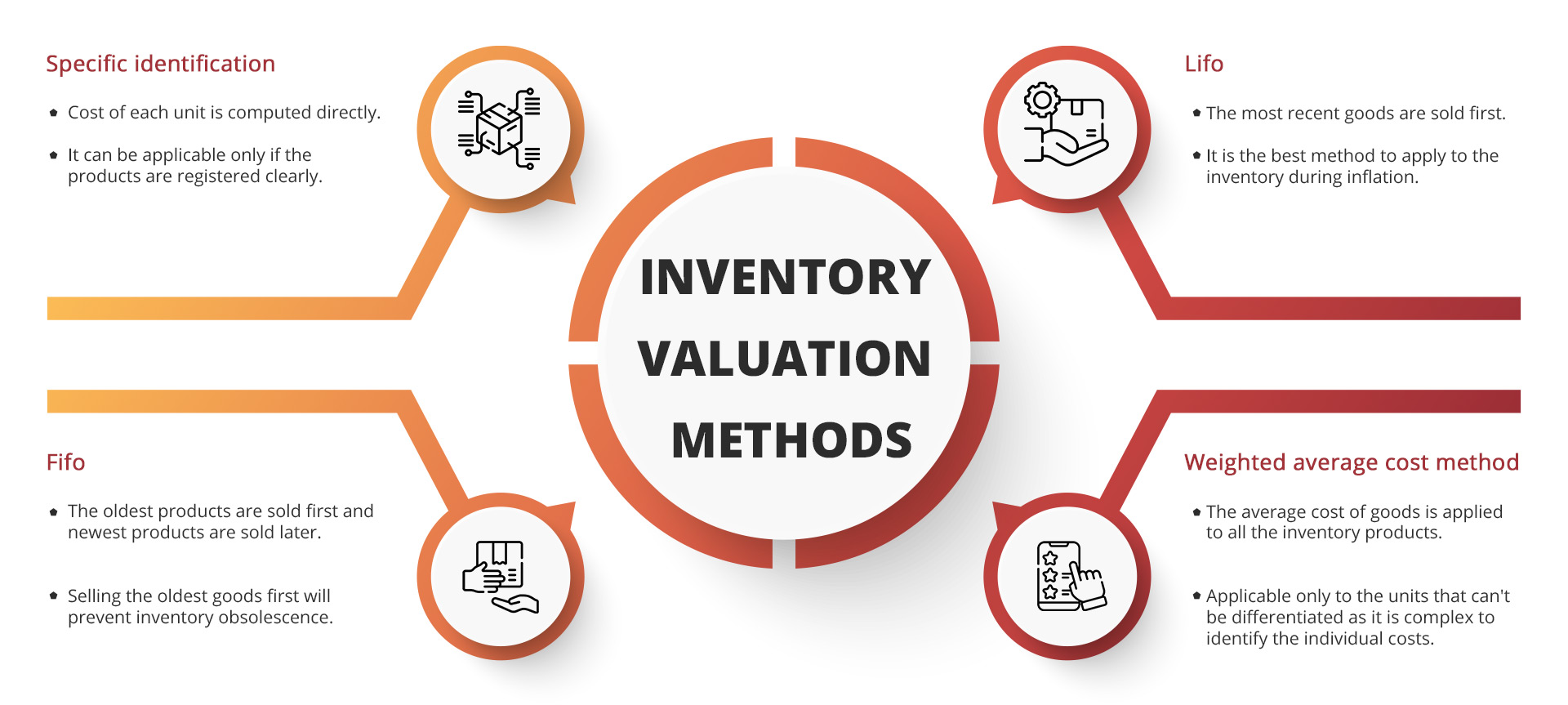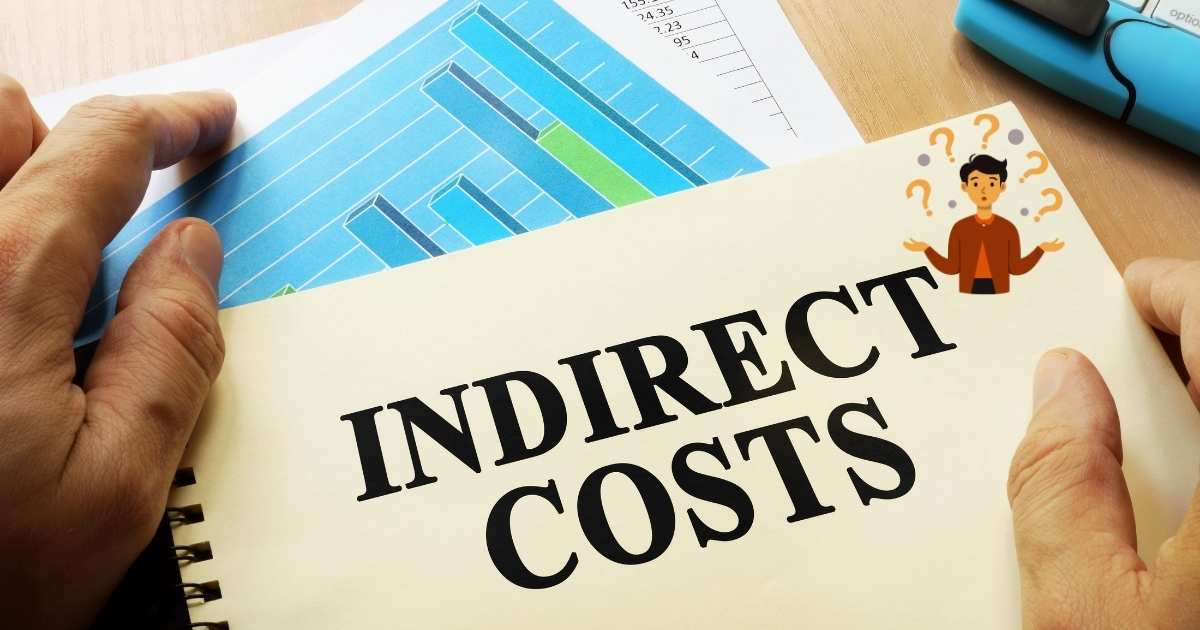Inventory valuation determines the total value of the inventory owned by the business during a particular period. The total value of the inventory depends on the cost of the purchased inventory and the associated costs of preparing it for forthcoming sales.
In accounting, the value of the item is based on the vital part of computing the costs of goods sold and it is the monetary value that directly impacts the income statement and balance sheet.
There are different types of inventory methods followed by businesses. To choose an effective inventory valuation method, understanding the current trend of the business’s finances and the potential for future growth is required.
What is Inventory valuation?
Inventory valuation is a vital process of allocating value to the inventory of a company. The inventory of a business is physical assets that are sold to generate revenue. And the inventory value has to be measured consistently to reduce wastage and carrying costs. In addition, a company can maintain accurate numbers and values in the financial statements.
⇒ What are Inventory valuation methods?
Inventory valuation methods are diverse methods that help the business to calculate the value of the inventory at the end of the accounting period. These inventory costing methods are used for accurate goods calculation and they can also be utilized to apply for a loan where it is recorded as a current asset in the balance sheet.
Some of the components of inventory valuation are the purchasing cost of the inventory, and converting the materials into salable and profitable forms. And further, ship it to the location where the goods can be sold. These inventory costs include labour, materials, handling, transportation, factory overhead, and import duties.
A proper inventory turnover ratio and understanding of the inventory will increase the revenue of the business. Listed below are some of the reasons why inventory valuation is crucial.
→ Impacts the cost of the goods sold
At the end of every accounting period, the value of the inventory is computed. If the inventory is of high value, the cost of goods sold is charged with less expense and in contrast, if the inventory is of low value, the cost of goods sold is charged at a higher price.
→ Impacts the amount of income taxes paid
By implementing the right valuation method, the amount of income tax paid can be minimised.
→ Changes the financial reports
An incorrect valuation will result in inaccurate values in profits which will impact the decisions of the business for two consecutive accounting periods. It also helps in international financial reporting standards.
Also Read : What is Inventory? Definition, types and benefits
Why is inventory valuation important for business?
The value of the company’s inventory directly impacts the cost of goods sold(COGS), gross income and financial value of inventory in each accounting period. Inventory value has a huge impact on the revenue of the company, and its expected value as recorded in the financial statements.
The next significant benefit of inventory valuation is that it helps in identifying unsold items remaining in the inventory that is stocked up in the inventory period for a long duration.
Inventory valuation is crucial to track unsold goods. And for every business, a common valuation method won’t be suitable. Based on your business decide on a proper inventory management method. In addition a standard rate in spite of determining different rates throughout the year. Here are some of the importance of the inventory valuation method.
⇒ Types of inventory valuation methods
Inventory includes finished goods, semi-finished goods and raw materials. The commonly used different inventory valuation methods are enumerated below.
♦ Specific identification
In this method, the cost of each unit is calculated directly. And this method can be applied to the inventory that has registered its products clearly. The complex part is to determine the actual cost amount of each item when registering it in the inventory.
♦ First in and first out (FIFO)
From a business point of view, this method is accurate. It automatically assumes that the first good purchased is first the first sold. And selling the oldest items first will minimise the risk of the item becoming obsolete.
Especially during inflation, the FIFO method of closing inventory, will give a significant value from the ending inventory, increase gross profits and minimises the costs of the goods sold.
And if there is an unexpected hike in the prices of goods the FIFO method will fail to give accurate results and it does not give any tax benefits.
♦ Last in and first out (LIFO)
This is also the best inventory valuation technique that automatically identifies that the last item of the inventory purchased is the first one to be sold.
Lifo method also has risks involved as it will sell the recently manufactured goods and the unsold inventory stock will become obsolete and non-moving. Hence it is limitedly applied.
And it is the right inventory valuation method to implement during inflation. The high-cost inventories are transferred to the cost of goods sold so that the reported profit margins can be minimised. This will benefit businesses to pay less tax.
♦ Weighted Average Cost method (WAC)
In the weighted average cost method, the average cost of the product is allocated to all the inventory items. The weighted average cost per inventory item per unit is computed as follows.
» Weighted Average Cost Per Unit = Total Cost of Goods in Inventory / Total Units in Inventory
This method can be applied to the units that can’t be differentiated as it is complex to identify the individual costs.
What are the objectives of Inventory evaluation?
The primary objective of inventory valuation is to identify the status of inventory accounting a company’s financial position and to calculate the gross profit accurately. Gross profit can be computed by subtracting the cost of the goods sold from net income sales (total sales – discounts and returns and other income irrelevant to sales).
Given below is the basic form of COGS at the end of the accounting year.
» COGS = beginning inventory + purchases – ending inventory
COGS does not comprise expenses for marketing and distribution, it directly includes expenses for materials and labour involved in making the product.
◊ Costs included in inventory valuation
So at the end of every financial year inventory is in the state of finished and unfinished products. To evaluate this state, the inventory valuation method is required to calculate the inventory value. Suppose to make a bike, many parts are needed. And to assemble all the parts together, overhead costs are incurred. Inventory valuation covers all the costs to calculate the total inventory value.
◊ Direct labour
Whether it is salaried or hourly-based workers, companies tend to spend more money on them. Only direct labour is included in the inventory valuation. Salaries are paid to the employees involved in the assembling of goods, the payroll taxes paid together and
◊ Direct materials
The materials that are used in the manufacturing of goods are termed as direct materials. The materials include products that are used in the manufacturing process, unused items, damaged goods, and materials that are discarded during production.
◊ Factory overhead
All the costs incurred during the manufacturing process are added to the factory overhead. This excludes direct materials and direct labour. Here is an example of factory overhead which includes the salaries of labourers outside the production process, but those involved in producing inventory such as quality assurance professionals, production supervisors and material managers.
In addition, it also includes other expenses such as rent, utilities, insurance, equipment set and other maintenance costs.
◊ Freight costs
This involves the transportation costs that are incurred during goods delivery. So if the company offers discounts of free shipping to the customers, then even that cost is included under the freight costs. And if the company delivers cheap or damaged products to the customer, then a freight out charge will be applied under this category.
◊ Handling
This category includes the costs in delivery such as packing, labelling the delivery, and loading the goods into the delivery vehicle.
◊ Import duties
Some of the imported goods which the business use may be subjected to duty charges. Duty-free exemptions are there for some goods due to trade agreements.
Also Read : What is ABC Analysis in Inventory Management System?
When should inventory use the lower of cost or market rule?
Inventory value fluctuates sooner or later. It is really bad when the market’s depreciation of inventory lowers the value of inventory during the time of its purchase. In that situation, businesses can record a loss by applying the lowest of cost or market rule.
A long-held inventory is the cheapest in the market. Businesses having an outmoded inventory pick either a market or cost rule.
→ Tips for choosing inventory valuation method
Take account of these tips when choosing an appropriate inventory evaluation method.
For calculating COGS:
The FIFO and WAC methods are accurate if you want to calculate the cost of goods sold. Again, the FIFO method is appropriate for businesses that want to sell the oldest items first.
For the entire inventory evaluation
The WAC method is accepted if you want to calculate the overall value of the inventory. So when the price of the products fluctuates, you can create a standard value that may be appropriate at that time.
Companies that involve in making only one product
The WAC method is more precise for companies that involve in making a single product. Its a faster method to analyse the value of the inventory.
Businesses with large inventory items
For companies dealing with large products like cars specific identification method is more accurate.
For tax purposes
To save taxes for your business the LIFO method is the best option. Then again the method is useful if the value of the inventory maximises over time. Businesses such as distilleries can execute this method.
For perishable goods
Businesses involved in the production of perishable goods can apply the FIFO method as the oldest goods are sold first.
⇒ Conclusion
The inventory valuation method directly impacts your profit margin and accounting principles. So choosing the right valuation method is complex but it will make a big difference to your business.
Analyse all the methods, but most businesses choose the FIFO method as it is more profitable. As a business owner you are perfectly aware of your business landscape, so choose wisely based on your situation.







